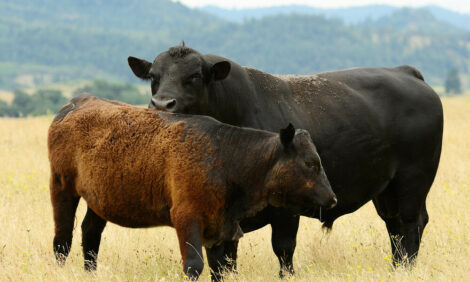



LMC: Cattle Shipments to GB Three Times Higher
UK - The seasonal leap in autumn trading from Northern Ireland direct to Great Britain's slaughterhouses is not expected this year because of high exports for the year so far, say market analysts at the Livestock and Meat Commission for Northern Ireland.With reported deadweight prices for prime cattle in GB remaining ahead of the prices being paid at NI plants it is perhaps not surprising that the number of cattle crossing the Irish Sea for direct slaughter in GB plants has shown a marked increase.
During 2013 to date the level of exports has been markedly higher than the levels recorded over the past number of years as indicated in Chart 1, write market analysts at LMC.
Chart 1 displays monthly exports of cattle to GB for direct slaughter from January 2011 to July 2013. In 2013 to date 8,663 head of cattle have been exported for direct slaughter in GB plants compared to 2,819 head exported during the corresponding period in 2012.
This increase in exports by 5,844 head accounts for a 207 per cent increase in the number of cattle exported to GB for direct slaughter year on year. The number of cattle being exported did
show a decline from 1,404 head in May 2013 to 1,099 head in June 2013 but this downward trend was short lived with exports during July this year increasing to 1,250 head.
As indicated in Chart 1 exports of cattle from NI to GB for direct slaughter tends to increase as we move into the autumn. This annual increase in exports coincides with the increase in the supply of grass finished cattle coming fit for slaughter and probably reflects stronger prices in GB at that time of year.
However, with the plants reporting tight numbers this summer and the number of beef sired cattle on the ground aged 12-30 months back 3.3 per cent between July 2012 and July 2013 it remains to be seen if this flush of cattle will appear, say LMC experts.
There has however been a nine per cent increase in the number of dairy sired male cattle aged 12-30 months on NI farms year on year. When these figures are combined the total number of beef sired cattle and dairy sired males on NI farms in July 2013 are back 2.3 per cent year on year.
It is also worth considering that there has also been an increase in the number of NI cattle being exported to GB for further breeding and production. Chart 2 displays the level of exports from NI to GB for further breeding and production from January 2011 to July 2013.
Calves under 42 days of age have been excluded from this analysis. As indicated in Chart 2 the level of exports to GB for further breeding and production during 2013 to date have been well above the levels recorded in 2011 and 2012.
Exports during 2013 to date have totalled 8,096 head compared to 3,408 head during the corresponding period in 2012. This increase by 4,688 head when comparing the two periods accounts for a 138 per cent increase in exports for further breeding and production.
The level of exports for further production increased month on month from January 2013 to peak at 1,787 head in May 2013 as indicated in Chart 2. The number of cattle exported to GB showed a marked decline in June 2013 to 666 head before increasing again to 929 head in July 2013. This demand for store cattle from NI possibly reflects tighter cattle supplies in GB.
As with the exports of cattle for direct slaughter the number of cattle exported for further breeding and production tends to show an increase in the autumn.
However, with the number of beef cattle on the ground reduced as indicated above and calf registrations back 8.7 per cent for the year to date development of these trends will be closely watched by all in the industry.
TheCattleSite News Desk



